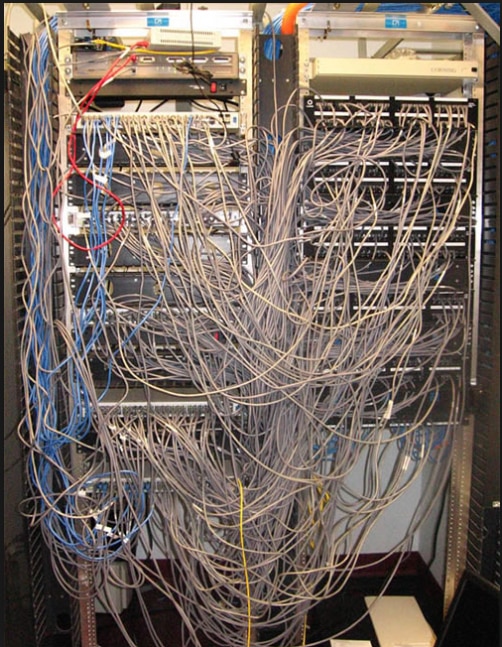 Virtual networking provides the same capabilities as a physical network, but with more flexibility and more efficiency across multiple locations without having to replace hardware or comprising reliability, availability, and security. Devices are connected over software using a vSwitch. Communications between the various devices can be shared on one network or separately on a different network. With software-defined networks, templates can be created and modified as needed without having to reinvent the wheel as you would with a physical networking device.
NSX-T is VMware’s next-generation SDN, which includes the same features as its predecessor NSX-V. The main difference is its ability to run on different hypervisors without having to rely on a vCenter Server.
VMware NSX editions include Standard, Professional, Advanced, Enterprise Plus, and Remote Office Branch Office (ROBO), each with a unique case. For example, Standard provides automated networking while Professional includes this as well plus Micro-Segmentation. For detailed information about each edition, please review the NSX datasheet here.
If you’re interested in learning more about NSX, VMware provides an array of options to choose from, including training, certifications, and hands-on labs.
Virtual networking provides the same capabilities as a physical network, but with more flexibility and more efficiency across multiple locations without having to replace hardware or comprising reliability, availability, and security. Devices are connected over software using a vSwitch. Communications between the various devices can be shared on one network or separately on a different network. With software-defined networks, templates can be created and modified as needed without having to reinvent the wheel as you would with a physical networking device.
NSX-T is VMware’s next-generation SDN, which includes the same features as its predecessor NSX-V. The main difference is its ability to run on different hypervisors without having to rely on a vCenter Server.
VMware NSX editions include Standard, Professional, Advanced, Enterprise Plus, and Remote Office Branch Office (ROBO), each with a unique case. For example, Standard provides automated networking while Professional includes this as well plus Micro-Segmentation. For detailed information about each edition, please review the NSX datasheet here.
If you’re interested in learning more about NSX, VMware provides an array of options to choose from, including training, certifications, and hands-on labs. What Is VMware NSX?
September 30, 2019 |
Systems

When purchasing Nicira in 2012, VMware wanted to further establish itself as a leader in software-defined networking, and more importantly, in cloud computing. VMware NSX provides the flexibility network administrators have long desired without having to rely solely on network hardware and its primary roles include automation, multi-cloud networking, security, and micro-segmentation. Additionally, the time spent provisioning a network is dramatically reduced.
NSX, the VMware software-defined networking (SDN) platform, lets you create virtual networks, including ports, switches, firewalls, and routers, without having to rely on a physical networking infrastructure. It’s software-based, nothing physical is involved, but the networks created can be seen from a virtual perspective. Simply put, the NSX network hypervisor allows network administrators to create and manage virtualized networks. Virtual networking allows communication without the use of network cables across various devices, including computers, virtual machines, and servers, using software.
However, virtual networks are provisioned, configured, and managed using the underlying physical network hardware. It’s important to keep this in mind, and it’s not my intention to say otherwise or mislead anyone.
Given the choice between a physical and software-defined network infrastructure, I prefer SDN. Physical networking devices and the software built into them depreciate over time. These devices also take up space in your data center—and the electricity needed to keep them powered on. Also, time is money, and it takes time to configure these devices.
Software-defined networks are easier on the eyes, which includes not having to worry about network cables or a cable management solution. Does anyone truly find the image below appealing?
 Virtual networking provides the same capabilities as a physical network, but with more flexibility and more efficiency across multiple locations without having to replace hardware or comprising reliability, availability, and security. Devices are connected over software using a vSwitch. Communications between the various devices can be shared on one network or separately on a different network. With software-defined networks, templates can be created and modified as needed without having to reinvent the wheel as you would with a physical networking device.
NSX-T is VMware’s next-generation SDN, which includes the same features as its predecessor NSX-V. The main difference is its ability to run on different hypervisors without having to rely on a vCenter Server.
VMware NSX editions include Standard, Professional, Advanced, Enterprise Plus, and Remote Office Branch Office (ROBO), each with a unique case. For example, Standard provides automated networking while Professional includes this as well plus Micro-Segmentation. For detailed information about each edition, please review the NSX datasheet here.
If you’re interested in learning more about NSX, VMware provides an array of options to choose from, including training, certifications, and hands-on labs.
Virtual networking provides the same capabilities as a physical network, but with more flexibility and more efficiency across multiple locations without having to replace hardware or comprising reliability, availability, and security. Devices are connected over software using a vSwitch. Communications between the various devices can be shared on one network or separately on a different network. With software-defined networks, templates can be created and modified as needed without having to reinvent the wheel as you would with a physical networking device.
NSX-T is VMware’s next-generation SDN, which includes the same features as its predecessor NSX-V. The main difference is its ability to run on different hypervisors without having to rely on a vCenter Server.
VMware NSX editions include Standard, Professional, Advanced, Enterprise Plus, and Remote Office Branch Office (ROBO), each with a unique case. For example, Standard provides automated networking while Professional includes this as well plus Micro-Segmentation. For detailed information about each edition, please review the NSX datasheet here.
If you’re interested in learning more about NSX, VMware provides an array of options to choose from, including training, certifications, and hands-on labs.
 Virtual networking provides the same capabilities as a physical network, but with more flexibility and more efficiency across multiple locations without having to replace hardware or comprising reliability, availability, and security. Devices are connected over software using a vSwitch. Communications between the various devices can be shared on one network or separately on a different network. With software-defined networks, templates can be created and modified as needed without having to reinvent the wheel as you would with a physical networking device.
NSX-T is VMware’s next-generation SDN, which includes the same features as its predecessor NSX-V. The main difference is its ability to run on different hypervisors without having to rely on a vCenter Server.
VMware NSX editions include Standard, Professional, Advanced, Enterprise Plus, and Remote Office Branch Office (ROBO), each with a unique case. For example, Standard provides automated networking while Professional includes this as well plus Micro-Segmentation. For detailed information about each edition, please review the NSX datasheet here.
If you’re interested in learning more about NSX, VMware provides an array of options to choose from, including training, certifications, and hands-on labs.
Virtual networking provides the same capabilities as a physical network, but with more flexibility and more efficiency across multiple locations without having to replace hardware or comprising reliability, availability, and security. Devices are connected over software using a vSwitch. Communications between the various devices can be shared on one network or separately on a different network. With software-defined networks, templates can be created and modified as needed without having to reinvent the wheel as you would with a physical networking device.
NSX-T is VMware’s next-generation SDN, which includes the same features as its predecessor NSX-V. The main difference is its ability to run on different hypervisors without having to rely on a vCenter Server.
VMware NSX editions include Standard, Professional, Advanced, Enterprise Plus, and Remote Office Branch Office (ROBO), each with a unique case. For example, Standard provides automated networking while Professional includes this as well plus Micro-Segmentation. For detailed information about each edition, please review the NSX datasheet here.
If you’re interested in learning more about NSX, VMware provides an array of options to choose from, including training, certifications, and hands-on labs. 






